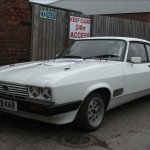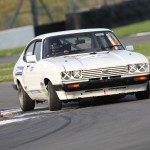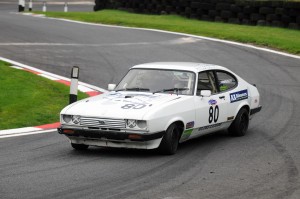It’s strange that the first question people ask when they’re checking out modified cars is often ‘How much power has it got?’ It’s all well and good being able to say it’s got 400 bhp, but how much weight is that power having to shift? If the car weighs two tonnes then you’ve only got 200 bhp per tonne, which is suddenly less impressive. That’s only equal to a 100 bhp engine in a 500 kg car. The thing is if you tell people you’ve only got 100 bhp they’ll snigger and walk away. ‘Pfff, my Mom’s Corsa has got more power than that’. The conversation’s over before anyone mentions weight.
Weight goes far beyond the simple bhp/tonne figure though. Bigger engines will often produce more than enough power to compensate for their extra weight. Carrying a hoofing great engine around does nothing for the handling though. The overall weight of a car will make a huge difference to how it accelerates, brakes and turns into a corner. The distribution of the weight in the car is just as important and can be used to either tune or ruin the handling characteristics.
It’s fairly obvious that having a light car means you can accelerate and brake faster, there’s less weight to move around. But just as important is how the weight is spread out across the cars tyres. Each tyre is actually holding up a different weight. In most road cars with the engine up front, the front tyres are holding up a lot more weight than the rears. Likewise with only the driver in, the off side tyres are carrying more weight than the nearside. Amongst other things, the amount of weight (or down force) a tyre has on it will dictate how much grip it can produce, up to a point. From that you could think a heavier car could corner faster. The problem is that the cars weight also acts sideways in a corner and it takes some of the available grip of the tyre and pulls it sideways, causing the tyre to ‘scrub‘. All tyres scrub sideways when turning, it’s known as the slip angle. Push the slip angle too far and you’re sliding, push the slide too far and you’re spinning. Heavier cars increase slip angles faster than light ones so they run out of grip faster.
To help ensure each tyre is carrying an equal load to start with, cars can be corner weighted. That involves raising the spring heights so more load goes onto the corners where there was less. Unless you have a very well balanced car the weight distribution will always be biased in one direction or another, but it helps to spread the cars weight as evenly as possible. This means each tyre is doing it’s fair share of clinging your car to the road. Corner weighting a car doesn’t necessarily move the weight distribution in the car, it just alters how the car’s suspension supports it.
Of course all that talk of spreading the weight out on the tyres is massively over simplified. There’s so many other factors influencing how the car’s suspension behaves, and all we’ve considered so far is how the weight is supported across the four corners. We should also spare a thought for where the weight is in the car. Rather than just say the car has weight, the weight distribution around the car can all be added up and said to have a centre of gravity. It’s basically the balance point for all the weight in the car. If the car was hung from a rope attached at the centre of gravity it would always be balanced. The centre of gravity also has a height within the car. The higher the centre of gravity the more a car will lean as it corners. It leans, or rolls because opposing forces act on the centre of gravity as you corner. It’s those forces you can feel when you are pushed out of your seat as the car brakes or corners. This is called weight transfer. The more it rolls during a corner the more it takes load off the inside tyres reducing the overall grip available to the car.
The centre of gravity rolls around a pivot point called its roll centre, which is set by the cars suspension pick up points. Unless you’re planning on moving the suspension pick up points the best way to reduce the amount of roll a car has is make it lighter and get the weight as low down in the car as possible. Stiffer suspension springs will resist body roll. Generally you’ll always want the softest springs possible for traction but stiff enough to stop too much weight transfer. Assuming your tyres are up to the job of transmitting the load then sometimes a bit more weight transfer in a straight line (pitch) helps push them into the road surface and get more grip. For example if you have a rear wheel drive car with the engine at the front you’ll need a bit of weight transfer to get the driving tyres to grip properly. Generally though too much weight transfer reduces grip and ruins the balance in the car, especially during cornering (roll). It’s that balance that everyone’s trying to find when they set a car up. How much weight your car has and where it’s distributed will affect how much weight transfer you have, how much work your suspension is having to do and so how hard you can push your tyres when accelerating, braking and cornering. Performance driving techniques are all developed around shifting the balance around the tyres to get the best grip for the longest time. It’s all of these factors and more that we focus on when developing a car, and it’s driver.
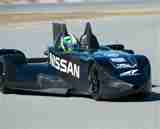

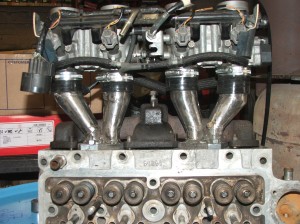
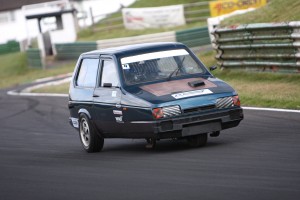
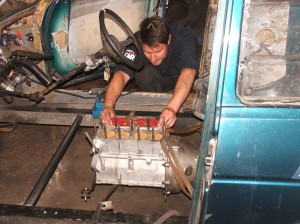
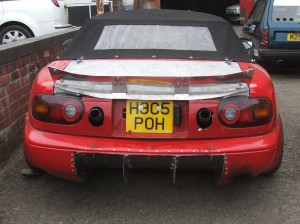

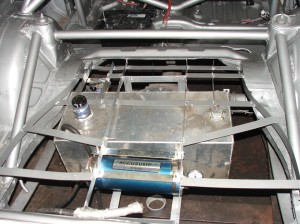
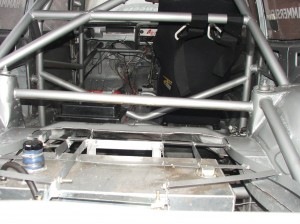
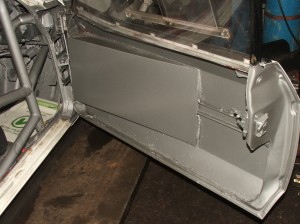
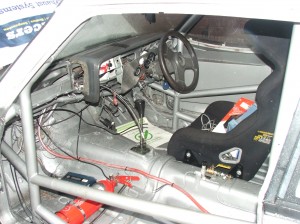
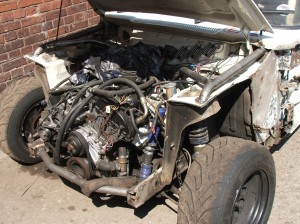
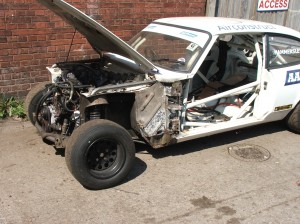
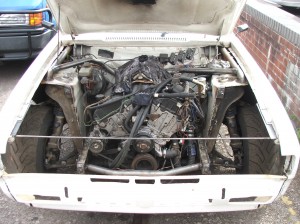

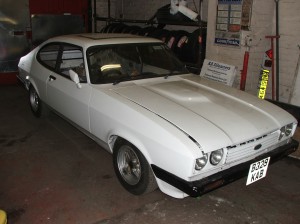 What was originally a 1.6 Ford Capri came in for some major work. This started by completely stripping it to a bare shell. All major areas of rust were tended to, all none structural metal was removed and a roll cage fabricated. Fibre glass wings, bonnet and tailgate were fitted and a new lightweight wiring harness was made. A new cross member was fabricated for the front to relocate suspension and steering components plus engine mounts for the new engine. An inlet manifold was fabricated from scratch to take an as yet untried inlet system combination and an ECU was sourced for the ignition. The wiring loom was made for the ECU and all necessary sensors sourced and brackets and adaptors made to fit them as required. The engine was fitted and rigged with a temporary cooling system. A dash was made and wired in to monitor everything and countless other jobs were completed to make all of these parts resemble a car and stand a chance of working. In late 2008 the key was turned and it fired in to life. All of the prototype systems functioned and the car could be driven. Although there was a huge amount of development to be done the ground work was laid for what would be a tremendous racing car.
What was originally a 1.6 Ford Capri came in for some major work. This started by completely stripping it to a bare shell. All major areas of rust were tended to, all none structural metal was removed and a roll cage fabricated. Fibre glass wings, bonnet and tailgate were fitted and a new lightweight wiring harness was made. A new cross member was fabricated for the front to relocate suspension and steering components plus engine mounts for the new engine. An inlet manifold was fabricated from scratch to take an as yet untried inlet system combination and an ECU was sourced for the ignition. The wiring loom was made for the ECU and all necessary sensors sourced and brackets and adaptors made to fit them as required. The engine was fitted and rigged with a temporary cooling system. A dash was made and wired in to monitor everything and countless other jobs were completed to make all of these parts resemble a car and stand a chance of working. In late 2008 the key was turned and it fired in to life. All of the prototype systems functioned and the car could be driven. Although there was a huge amount of development to be done the ground work was laid for what would be a tremendous racing car.